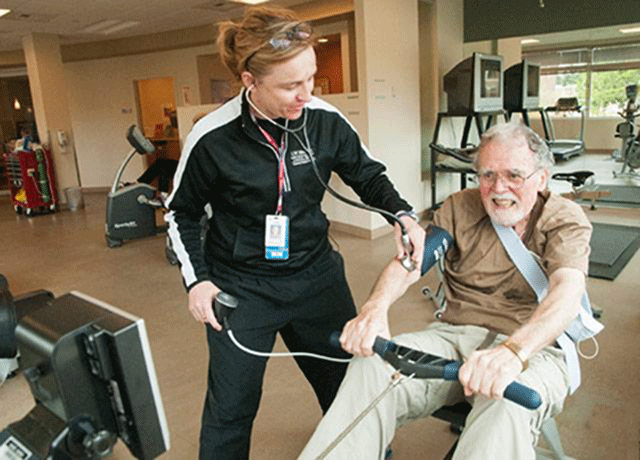
According to a study published in Circulation, among more than 230,000 cardiac patients who had sustained a myocardial infarction or undergone one of two common heart procedures, only 16% participated in a formal exercise program after their hospitalisation. Lead investigator Alexis Beatty (Veterans Affairs Puget Sound Health Care System, Seattle, USA) claimed that the finding was “disappointing”.
Beatty and colleagues reviewed rehab enrolment in 2007-2011 among some 143,000 Medicare and 88,000 Veterans Affairs patients who had been hospitalised for myocardial infarction, coronary-artery bypass surgery, or percutaneous coronary intervention (PCI).
Cardiac rehab typically comprises thrice-weekly, hour-long sessions of exercise and risk modification for 12 weeks. Evidence of benefit is strong, with Beatty noting: “Participants have better life quality, fewer rehospitalisations, and less chance of dying of a heart condition than patients with similar medical histories who do not participate, research has shown. Most insurance providers, including Medicare Part B and the VA, cover cardiac rehab for the conditions described.”
Cardiac rehab participation rates varied widely across US states, ranging from 3% to 41% among Medicare patients and 1% to 47%among VA patients. Regional variation, however, was remarkably similar across both groups. With a map of nine regions, researchers found that patients in the West North Central (Iowa, Kansas, Minnesota, Missouri, Nebraska, and the Dakotas) region participated most. Those in the Pacific region (Alaska, California, Hawaii, Oregon, and Washington) participated least.
Rates of referral for cardiac rehab vary, sometimes widely, among hospitals. Beatty pointed to recent studies that showed a range of eligible patients referred, from 48% to 91%, depending on the medical indication and the patients’ region. This inconsistency spurred the “Million Hearts” initiative, established in 2012 by the US Department of Health and Human Services and the Centers for Medicare & Medicaid Services.
“We really have not seen any improvement since the last time this issue was examined, about 10 years ago. Some areas are doing relatively better, like the central-north USA, and we would attribute that mainly to cardiologists promoting it more and health systems having a cardiac rehab service in place,” she comments and adds “some cardiologists do a better job at getting their patients to attend cardiac rehab”.










